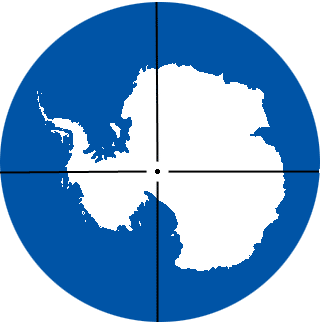Antarctica Fact File
Quick Antarctic Statistics
 Area
Area
13,829,430 km25,339,543 miles2
1.4 x bigger than the USA
58 x bigger than the UK
1.8 x bigger than Australia
Ice-free area (0.32% of total)
44,890 km217,330 miles2
Largest Ice Shelves
Ross ice shelf:(about the size of France)
510,680 km2
197,974 miles2
Ronne-Filchner ice shelf:
(about the size of Spain)
439,920 km2
169,850 miles2
Mountains
Transantarctic Mountain chain, length:3,300 km
2,050 miles
Highest 3 mountains:
Mt. Vinson - 4,892 m / 16,050 ft
(sometimes called "Vinson Massif")
Mt. Tyree - 4,852 m / 15,918 ft
Mt. Shinn - 4,661 m / 15,292 ft
Ice
Antarctica has 70% of all the world's freshwater frozen as ice - and 90% of all the world's ice.Thickness
Mean1,829 m / 6,000 ft
Mean thickness East Antarctica:
2,226 m / 7,300 ft
Mean thickness West Antarctica:
1,306 m / 4,285 ft
Maximum ice thickness:
4,776
m / 15,670ft
Lowest point:
Bentley subglacial
trench, depth below sea-level
2,496 m / 8,188
ft
Volume
M km3 = Million cubic kilometresTotal:
25.4 M km3 / 6.09 M miles3
Grounded ice sheets
24.7 M km3 / 5.93 M miles3
Ice shelves:
0.7 M km3 / 0.17 M miles3
Peninsula ice:
0.1 M km3 / 0.024 M miles3
Population
About 4,000 on scientific bases in the short summer 1,000 total in winter, around 30,000-40,000 summer tourists - and this place is 1.4 x bigger than the USA! There are NO permanent residents and NEVER has been a native populationPopulation density = 0.00007 winter / 0.00028 summer per km2
World average = 54
Greenland (next lowest) = 0.03
Discovery and Exploration
Antarctica was imagined by the ancient Greeks, but not even seen until 1820.The first time anyone set foot on Antarctica was in 1821.
The first year-round occupation - overwintering - was in 1898.
The South Pole was first reached in 1911.
Climate
3 factors rule in Antarctica - cold, wind and altitude. Antarctica holds the world continental records for each of these three things.The temperature falls as you leave the coast as the continent slopes upwards and temperature falls as you go higher.
Temperature:
Lowest recoded on earth - Vostok station -89.2°C / -128.6°FAverage summer temperature at South Pole -27.5°C / -17.5°F
Average winter temperature at South Pole -60°C / -76°F
Wind:
Mawson station in Antarctica is the windiest place on earth.Average wind speed:
37 kmh / 23 mph
Maximum recorded gust:
248.4 kmh / 154 mph
Landforms
Antarctica has many landforms - it's a continent! But for the benefit of your geography teacher, here's a few main ones:glacier
coral reef #
desert
mountain
plain
plateau
valley
nunatak
# - this is a lie
Further details
Antarctica Environment
What is it like in Antarctica?- 1
What is it like in Antarctica? - 2
Fun Facts
about Antarctica
Antarctica
Lite
Antarctic Climate and Weather
The South Pole
Dry Valleys
Artic and Antarctic Comparison
Antarctica Politics
The
Government of Antarctica
The
Antarctic Treaty summary
The Antarctic
Treaty full version
Human impacts and threats:
fishing
|
mining and oil |
pollution
tourism
|
endangered
animals
Antarctica Science
Science in Antarctica
80 Questions to Answer
Climate Change Science
Ice Science
Life Sciences
Space Science
The ozone hole
Antarctica
glossary A - H
Antarctica
glossary I - Z
Antarctic
slang
Food
|
More on food
Surviving the
cold
How penguins survive the cold
Hypothermia
Global
Warming - an Overview:
Global
Warming in Antarctica
Misconceptions
Prevention
Carbon Offsetting
Tree Planting
Carbon sinks
Carbon cycle
Antarctica History
Exploration
time line
Roald Amundsen
Douglas
Mawson
Robert
Falcon Scott, Discovery expedition
Robert
Falcon Scott, the South Pole
Sir Ernest Shackleton, Nimrod Expedition
Sir Ernest Shackleton, Trans-Antarctic (Endurance)
expedition
Antarctica geological timeline
Ships of the explorers:
L'Astrolabe |
Aurora
|
Belgica
|
Discovery |
Endurance |
Erebus and Terror |
Fram
Nimrod
|
Terra Nova
Antarctica Animal Life
Penguins:
Adelie penguin
Pygoscelis adeliae
Chinstrap
penguin Pygoscelis antarctica
Gentoo penguin
Pygoscelis papua
Emperor
penguins Aptenodytes forsteri
King penguins
Aptenodytes patagonica
Seals:
Weddell seals
Leptonychotes weddelli
Southern
Fur seal Arctocephalus gazella
Southern
Elephant seal Mirounga leonina
Crabeater
seal Lobodon carcinophagus
Leopard Seal
Hydruga leptonyx
Marine Life:
Whale
species - species and lifestyle
Whaling -1
- historical perspective
Whaling -2
- why were whales caught?
Whaling in
the 21st century
Whaling pictures
Whales and
food webs
Krill
- Euphausia superba
Other birds:
Snow
petrel Pagrodama nivea
Blue
eyed shag Phalacrocopax atriceps
Giant petrel
Macronectes giganteus
Wandering
albatross Diomedea axulans
Antarctic
skua Catharacta maccormicki
Cape pigeon
Daption capense
Sheathbill
Chionis albus
Antarctic
tern Sterna vittata
